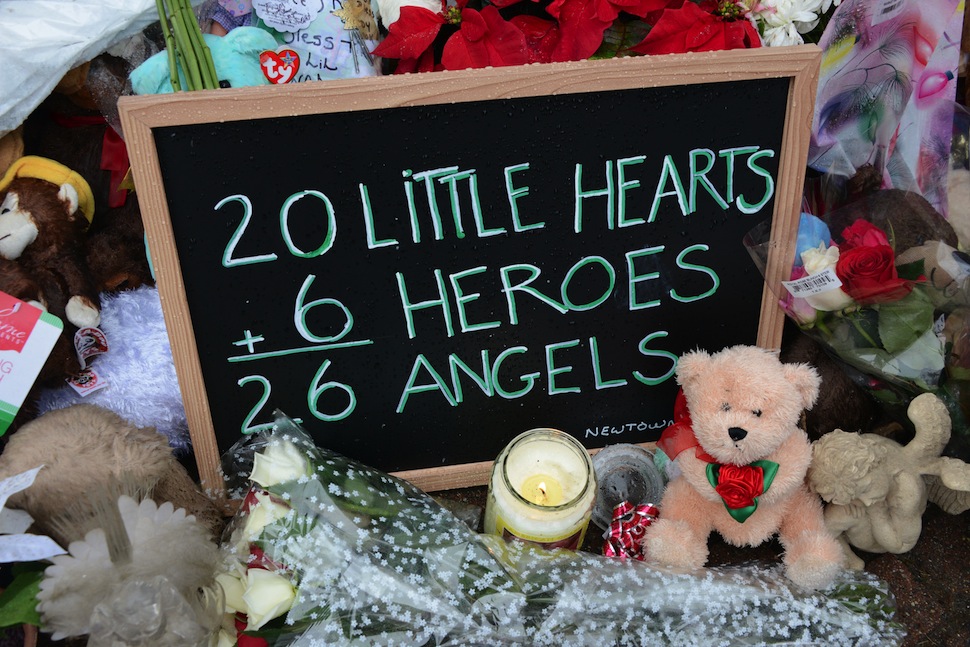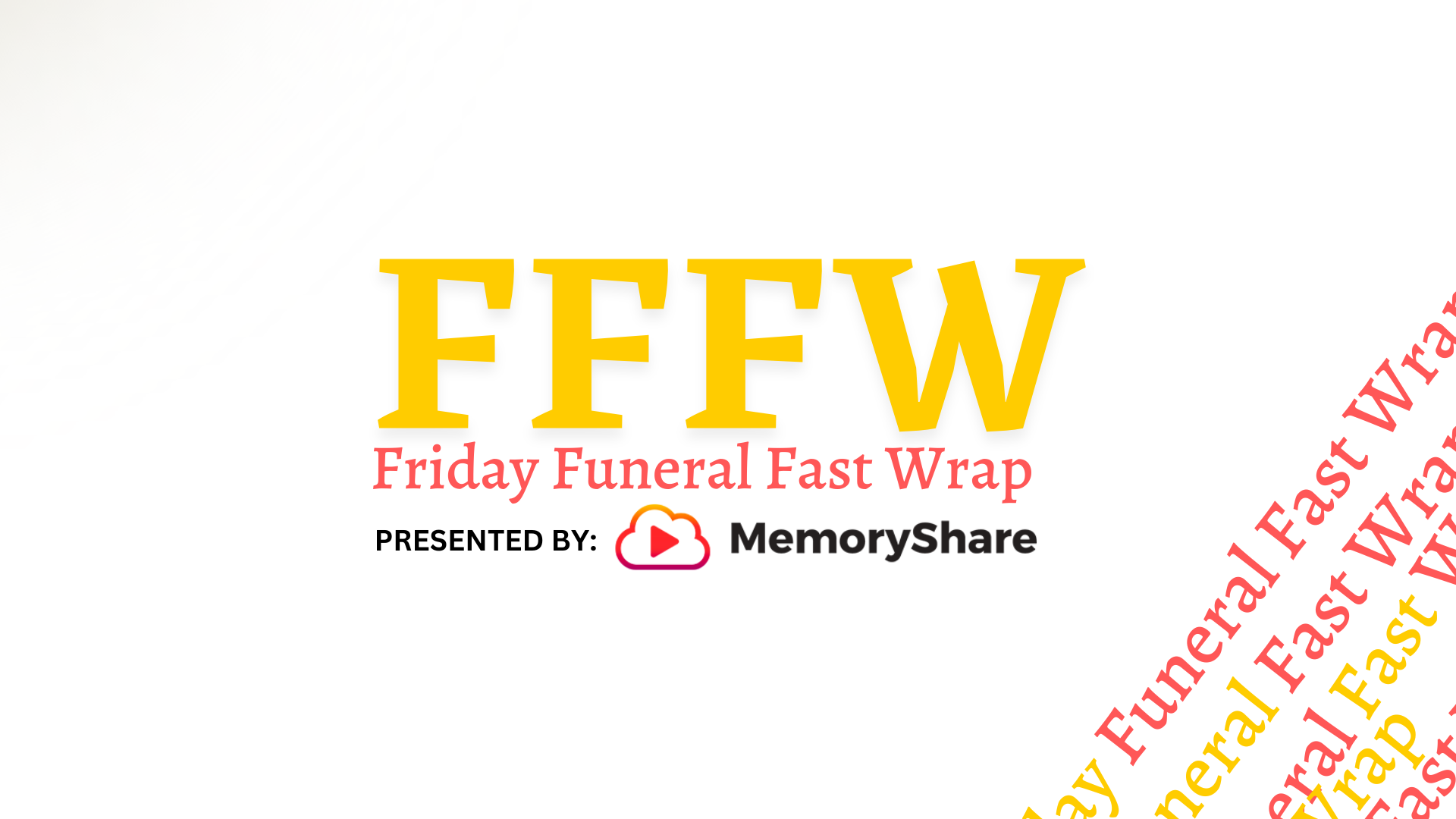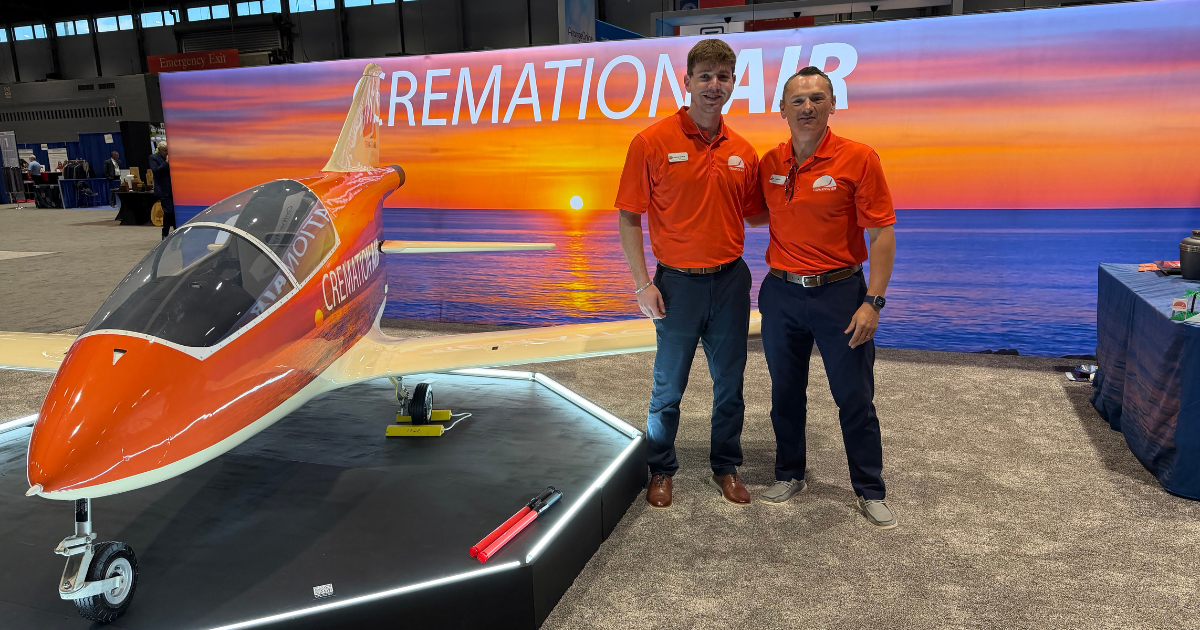One Year Later: How the Connecticut Funeral Directors Association And Its Members Faced the Challenges in Newtown
Article originally published in the December 12, 2013 issue of The Memorial Business Journal
It doesn’t seem like yesterday, but it is hard to believe it was a year ago that a gunman entered Sandy Hook Elementary School in Newtown, Connecticut, and took the lives of 20 first-graders and six of the school’s faculty and staff who were trying to save the children.
At the recent National Funeral Directors Association International Convention & Expo, members of the Connecticut Funeral Directors Association (CFDA) took part in a standing- room-only workshop titled “How the Connecticut Funeral Directors Association and Its Members Faced the Challenges of Newtown.”
“Our hope is that you will take with you some insight as well as some foresight about the role of funeral service in a tragedy such as this,” said John Cascio, CFDA executive director. The panel discussed how they planned, organized, worked together as a team, found the strength to set their own grief aside to sup- port each other and give their very best effort to the families devastated by this unspeakable act.
“It was, and always will be, a teachable moment for us all,” Cascio said.
“On December 14, 2012, Newtown and all of Connecticut
was forever rocked to its very core,” he said. “Almost a year later (Cascio delivered his remarks October 22), the tragedy is still a regular topic in the news. The media to this very day still report on the Newtown tragedy, or as it is sometimes called, the tragedy at Sandy Hook Elementary School.”
Cascio described Newtown as a “quiet, bedroom commu- nity” with a population of 27,500. Before December 14, 2012, it was best known for its 110-foot flag pole in the center of town. “This enormous flag flew high and is a symbol of Newtown,” he said.
On that morning, Cascio was in his office without a radio and was not paying direct attention to the Internet or any news pages.
“It was not a pretty day,” Cascio recalled. “It was a cloudy day, windy and rainy.” About mid-morning, he received a call from someone who asked if he had heard about what had hap- pened in Newtown. At that point, Cascio was not aware, but as the details began to trickle in, funeral directors began calling the office as the news hit the mass media. Twenty first-graders, teachers, a school psychologist and the principal were dead at the hands of a young man with a semi-automatic weapon. Cascio’s first call was to the Connecticut State Medical Examiner’s
Office to let them know that CFDA would be ready to assist when needed.
Back in 2008, when news stories talked about bird flu, mad cow disease and anthrax, CFDA partnered with the state of Connecticut to develop a pandemic/mass fatality plan. “We had charts, forms and recommended suggestions,” Cascio said. “Fortunately, we did not have to put this plan into action.”
Sandy Hook was not a pandemic event nor a mass fatality. “However, we had a framework, a place to start,” Cascio said.
The day after the shootings, CFDA’s Executive Board met at its office, along with Laura Soll, CFDA’s communications consultant. Cascio said his responsibility as executive director was to find out the next step. “Our biggest challenge was to wait patiently, take a deep breath and expect the unexpected,” he said.
Within hours, the board formulated a fax/email for members and suppliers that was a call to action for services, equip- ment, facilities and support.
“This call to action form was filled out by almost every funeral home in the state of Connecticut,” Cascio said. “It pro- vided professional services, arrangers, funeral directing, embalmers, support staff, and the list goes on.”
Later that day, a half-dozen Connecticut funeral directors traveled to Newtown to volunteer their services to Honan Funeral Home, a small, family-owned facility and the only one in Newtown. The funeral directors spent the day prepar- ing as state police and the medical examiner’s office were still processing the scene at the school and moving bodies to the ME’s facility.
Soll was in contact with all other funeral directors in the state to offer her assistance if and when the media would contact them. Other communities that served the families included Wallington, Windsor, Southbury, Danbury and Monroe.
There are 293 funeral homes (75 percent or 220 funeral homes are CFDA members) and nearly 1,000 licensed funeral directors and embalmers.
Cascio said that by the end of the day on Saturday, December 15, more than 160 CFDA funeral directors had volun- teered. “Nearly every CFDA member in the state volunteered in their own way,” he said. “Many stayed on call to cover those who had to mobilize and were going to Newtown.”
The volunteers were assigned to teams based on resources needed and their availability. In addition to those volunteers who responded to the call for action, dozens showed up and were put to work.
Cascio received a text message later that day from the medical examiner’s office saying that they would be making the removals themselves. At that point, the volunteers were able to stand down for the night.
“We worked to keep the media informed but at bay,” Cascio said.
Twelve CFDA-member funeral homes received victims of the shooting. All but three of the victims were buried in Connecticut.HonanFuneralHomewaschosenby11ofthefamilies.TheotherswereburiedinMassachusetts,NewYork and Utah.
For the most part, the volunteers were centered at Honan Funeral Home. As the bodies were released by the medical examiner, they were taken to Carmon Community Funeral Homes in Windsor, and West Haven Funeral Home in West Haven, facilities large enough to handle the embalming and preparation of 11 bodies.
Other volunteers who were licensed funeral directors assisted with paperwork, ran errands, answered phones, drove hearses and used their interpersonal skills to console families.
Toward the end of the week, Cascio also went to Newtown to help out. There, he was vacuuming the funeral home, helping with flowers – whatever needed to be done. Thousands of people streamed through Honan Funeral Home that week for the services of the 11 victims.
“The most vivid memory was when I helped assist a funeral director who I had known for many years as he carefully
touched up the destroyed beautiful face of a six-year-old child, giving her back her angel look,” Cascio said. “I will forever
be awed by the skill of his artistry.”
By the end of the week, Cascio had watched his membership doing a job under the most catastrophic conditions. “They worked side by side in unfamiliar facilities, performing nearly miraculous transformations on the tiny bodies,” Cascio said.
Pasquale Folino, who began his second one-year term as CFDA president eight days before the Newtown shootings, talked about his experience from a funeral director’s perspective.
“It was life’s worst nightmare,” he said. “All of us were outraged, saddened and shocked.
“In my 25 years of serving families that have lost a loved one, nothing could have prepared all of us who were in New- town to deal with those families,” Folino said. “As much as I ask you to pray for the victims, also pray for those who sur- vived,” Folino said. “Their lives will never be the same.”
The volunteer funeral directors’ purpose was to assist a funeral home in need. “The plan that was in place was a start- ing point,” he said. “But the funeral directors on the ground shifted gears when they needed to.”
Folino also recalled receiving a call from a funeral director in California who said he would fly in to do whatever he could. Not being licensed in Connecticut, he said he would park cars – anything to help. “People were calling from all over the country offering their services,” Folino said. “We received many of these calls.”
“This was a tragedy that brought funeral service together to assist a fellow colleague and families in a time of need,” he said. “The families were served by 160 funeral directors. They were there to do whatever needed to be done.”
After the board meeting December 15, Folino drove to Newtown with Soll and Howard K. Hill, CFDA vice presi- dent. The cold reality of what had happened hit them as they exited the highway and headed into Newtown. “We saw the makeshift memorials and we saw people walking with their heads bowed,” Folino recalled. “Then we saw all of the TV news trucks.”
When the three arrived at Honan Funeral Home and greeted Honan and his wife, Colleen, two CFDA past presidents, John Zaleski and Celia Pinzi, were already there. “Howard and I started cleaning, vacuuming and setting up – trying to keep busy,” Folino said.
Folino also singled out the efforts of Dan Honan, whose funeral home was at the center of grieving as well as the media storm. “What he did during that week was incredible,” Folino said. “He allowed us to come into his funeral home – not everyone would do that. He opened the doors and said, ‘You can help.’”
Folino noted that when Honan sent him or the other funeral directors to make arrangements, he gave specific instruc- tion: “Do whatever the family needs done,” Honan told them. “And don’t worry about the cost.” The families would not be charged.
In the days that followed, funeral directors were working in teams. “We had a coordinator on the ground, Shauna Mal- loy,” Folino said. “She became our defacto leader. She assumed that role. She made sure that every funeral director had a limo, hearse and staff lined up. All of the funeral directors in the room took their direction from her. We needed someone on the ground to organize the situation, and she stepped into that role.”
Folino shared the story of the pink ties that all of the funeral directors wore during the service for one of the young victims whose name was Charlotte, and her favorite color was pink. Erin Hastings, a CFDA board member from Beecher & Bennett in Hamden, Connecticut, suggested that those working this particular service wear the pink ties. The idea was taken to Honan, who told the funeral directors to do whatever they could to help the family. The suggestion was made to the girl’s family, and they said they would be honored if the funeral directors wore pink ties or pink ribbons.
“At the end of the service, the minister called us forward and thanked us publicly for what we did for the family,” Folino recalled. “And he thanked the entire CFDA membership for what they did for all of the families of Newtown.
“And then something happened that I had never seen in all my years,” Folino continued. “The congregation rose to acknowledge the Connecticut Funeral Directors Association.”
He described Newtown that week as a sea of hearses. “People were pulling over, getting out of their cars and bowing their heads, blessing themselves,” Folino said. “The entire town just stopped for us.”
Not only did what happen in Newtown change that community forever, Folino said CFDA has changed as well. “We are stronger, we are prouder and we have made long-lasting relationships.”
Folino also told the story of when he came home that night after Charlotte’s funeral and his daughter asked about the tie and even asked to see a picture of Charlotte. Folino had one of the prayer cards with the girl’s picture on it. His daugh- ter said to him, “She was a beautiful little girl, Daddy.” That night, Folino went into his study, took his tie off and wrote a note to Charlotte’s father. It said, “I hope that some day you could wear this tie that I wore at her funeral so you can remember all the things that she loved, especially pink.” Later, he saw a photo of Charlotte’s father wearing that tie at an event that marked what would have been the girl’s seventh birthday party.
“I think we made a difference,” Folino said.
Laura Soll, CFDA communications director, said calls from the media started going to Honan Funeral Home less than four hours after the shootings. “Reporters quickly knew there was only one funeral home in town and wanted to speak with Dan Honan about the day’s events,” she said. “I called and introduced myself and told him that CFDA would step in and work with the media to make it possible for him to focus his undivided attention on the families. At that time, we had no idea how many there would be.”
Soll gave Honan her number and said to tell any staff members to give that number to any reporters that called.
Honan took Soll up on the offer, and bright and early the morning after the shooting, there were reporters knocking on the door of his funeral home. It was the beginning of an unprecedented week of nonstop media coverage in the small town.
Soll said media relations is a priority for CFDA and an area in which the association has a great deal of experience. She said that a decade earlier, CFDA began a practice of proactively contacting reporters when a controversial story arose in the industry instead of waiting for calls. “We knew that CFDA had to get out in front of the growing media interest,” she said.
Soll added that if CFDA did not move fast and proactively, funeral homes in that area would have been bombarded with media inquiries about upcoming funerals, the children and their families. “Our top priority was that the funeral directors and the families they would serve would be given their privacy as they made their difficult arrangements, and that there would be no distractions,” she said. “If we were able to keep reporters constantly aware of funeral details and related news, they would be less apt to contact the funeral homes directly.”
Just as the media were told that any information related to the crime scene would be provided solely by the Connecti- cut State Police, CFDA made sure the media knew there was one point person – Soll – for giving out details about the arrangements.
The strategy for that week incorporated the basics of crisis communications and public relations – provide clear infor- mation, be consistent in your message and deliver it in a timely fashion.
On Saturday morning, even before the CFDA board met, Soll crafted a statement requesting that the media “please give these professionals and the families they are serving the time and the privacy they need during this very difficult time.”
“We sent the statement to our media list in Connecticut and in nearby states, as well as to the funeral trade media,” Soll said. “Then we contacted the Associated Press and asked them to help us in a way they had never before been asked. Since AP provides breaking news to media outlets throughout the world, we asked them to take our statement and for- ward it to everyone.”
“It was an unusual request, but we thought the situation warranted it, and AP management approved the request. With- in minutes of their message, media worldwide knew that CFDA was the source for Newtown funeral news,” Soll said. The calls came pouring in and CFDA put out numerous media alerts – sometimes as many as three a day – with new informa- tion about the day and time for every public funeral or memorial.
“When the victims’ families asked, we also sent on their special statements and favorite photos they wanted to share,”
she said.
Establishing a team of spokespeople was key since communication with reporters beginning that Saturday morning was virtually nonstop. The team included Folino and Cascio, as well as some CFDA past presidents and current Executive Committee members who had been trained in media relations. Every few years, CFDA provides informal media training for its leadership so they are on board if they need to respond to reporters.
When an request for an interview came in from a reporter, Soll determined which funeral director would be the best choice for the topic and who had the time to do it.
“We were on the phone or emailing up to 18 hours a day,” Soll said. “We spoke with every caller, responded to every email.”
Midweek, a Boston TV station had reported that the body of Nancy Lanza, mother of shooter Adam Lanza, who was killed by her son before he went to Sandy Hook Elementary, had been released by the medical examiner and would be buried in New Hampshire.
To help prepare the New Hampshire Funeral Directors Association for what would likely be a media frenzy to find out details related to this disposition, Cascio called his counterpart in New Hampshire, Peter Morin, to offer CFDA’s support. Soll was called on to prepare for the wave of inquiries.
“Our advice to Peter was similar to our strategy in Connecticut,” Soll said. “Communicate immediately with your membership, make them aware of the situation and possible media inquiries; tell them they could direct all calls from re- porters to the state office so they could continue to serve their own families in peace. And offer any association assistance they can to the funeral home caring for the deceased.”
Soll worked with Morin to craft an email memo communicating these points, which was sent to members. Within a few hours, one member contacted Morin to inform him that his funeral home would be handling the family of deceased. By that time, she was already quickly and privately buried.
“That swift action of the New Hampshire Funeral Directors Association helped to divert a potential media frenzy and effectively prepared their members,” Soll said. “As expected, once the media received the information about Mrs. Lanza they needed to file their story, they moved on, turning their attention back to Newtown.”
Because CFDA was so accommodating with media requests, Soll said it turned out that 99.9 percent of the media were respectful. “We were told by several that they had never had worked with such an open and helpful organization during such a chaotic time,” she said.
On one occasion, a reporter for a major news outlet called Cascio directly and lied to him, saying she was told to con- tact him directly. In some cases, CFDA was forced to develop a secret password.
The fact that CFDA had built relationships with the press and the medical examiner’s office helped mute the media frenzy and allowed the practitioners to focus on the tasks at hand.
When Cascio returned to Newton many weeks later, he found that the flag was still flying and the town was bustling. “Then I came upon an evergreen tree that in December was filled with many tributes to the children and faculty of Sandy Hook,” Cascio said. “And there at eye level was a string of angels with the names of all of the victims.”
Folino said Newtown is slowly making its way back. Sandy Hook Elementary School has been razed and a new building will be erected on the site but not necessarily in the same footprint. Said Folino: “It’s one moment at a time.”




